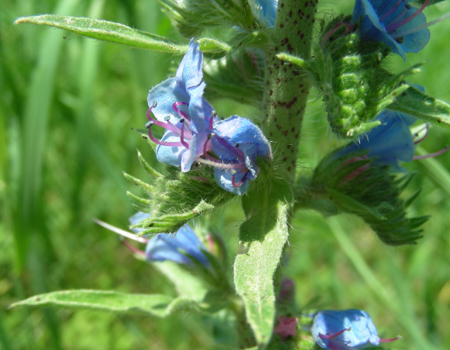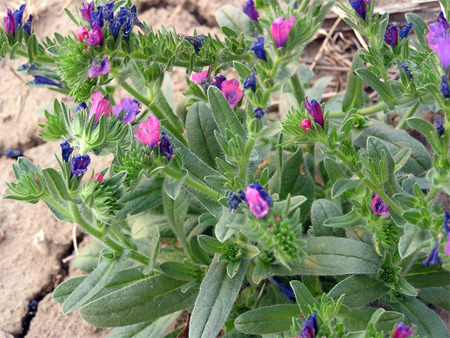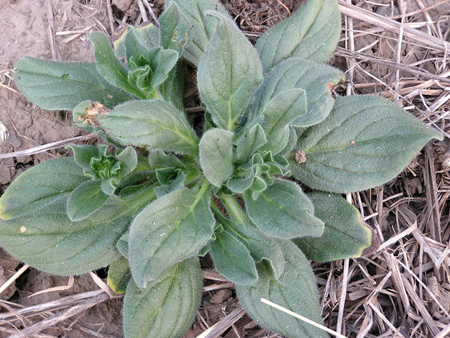Paterson's curse - Echium plantagineum
Weed Seed - Paterson's curse (Echium plantagineum)
Paterson's curse is an invasive plant that degrades pastures, reduces crop yield and is toxic to animals. It contains alkaloids that can be toxic to people and livestock if consumed. Paterson's curse can also contaminate honey, potentially having an impact on the Canadian honey industry.
Where it's found
Paterson's curse has been introduced into Canada, but to date has never persisted. Native to Europe, Paterson's curse has spread worldwide and has become invasive in Australia, South Africa, parts of South America and the state of California in the United States. Within these areas, Paterson's curse is found in pastures, roadsides and waste places.
What it looks like
Paterson's curse is an annual or biennial plant with broad, hairy leaves and trumpet-shaped, purple flowers. Plants can grow up to 1.5 m tall but are commonly 20-60 cm tall. Blueweed (Echium vulgare) is a similar species found in Canada. These two species can be distinguished by the number of stamens protruding beyond their petals: two for Paterson's curse and four for blueweed.
How it spreads
Paterson's curse produces seed over much of the growing season, resulting in large seed banks. These seeds can germinate under a wide range of temperatures and can survive up to 10 years in the soil. Seeds spread by attaching to animals, being ingested, and being associated with seed, hay, grain, soil, gravel, vehicles and equipment.
Legislation
Paterson's curse is regulated as a pest in Canada under the Plant Protection Act. It is also listed as a prohibited noxious weed on the Weed Seeds Order, 2016 under the Seeds Act. Importation and domestic movement of regulated plants and their propagative parts is prohibited.
What you can do about it
- Use clean grain, hay and straw.
- Use clean, high-quality seed that is certified if possible.
- Ensure machinery, vehicles and tools are free of soil and plant parts before moving them from one area to another.
- Contact your local Canadian Food Inspection Agency (CFIA) office if you suspect you have found this invasive plant. The CFIA will follow up and determine if further action is needed.
Learn more about invasive species.


Tim Butler, Oregon Department of Agriculture

Tim Butler, Oregon Department of Agriculture
- Date modified: